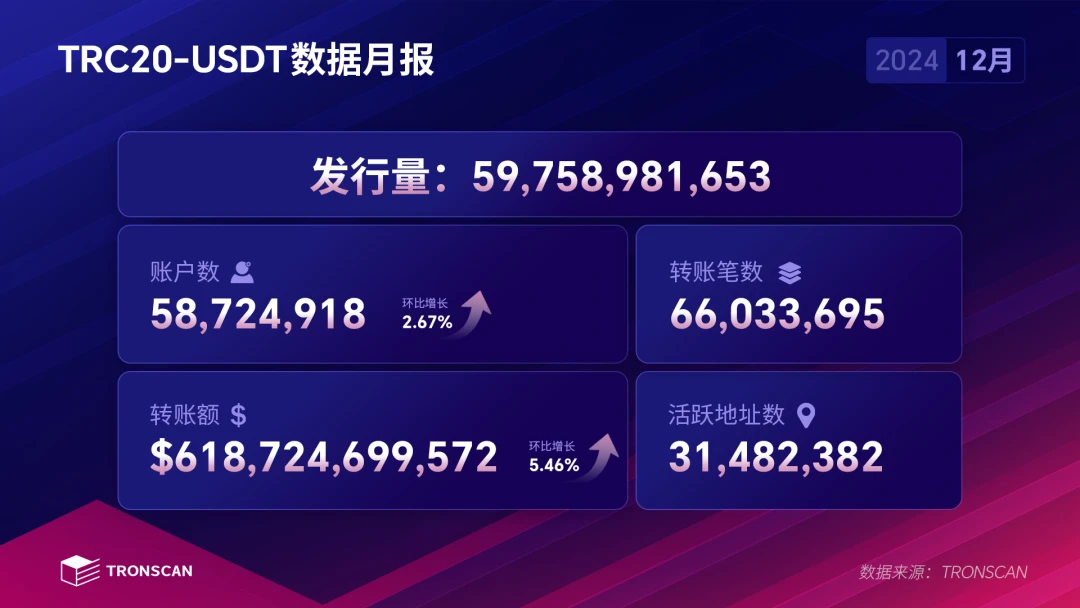As the most popular stablecoin on the chain, in December 2024, TRC 20-USDTs data hit new highs again, and TRONs leading effect in the stablecoin field has become increasingly significant.

In December, the issuance of TRC 20-USDT exceeded 59.7 billion; the number of accounts holding it exceeded 58.72 million, a month-on-month increase of 2.76%. Among them, the number of active addresses exceeded 31.48 million, accounting for more than half of the total number of accounts. Since its official launch in April 2019, TRC 20-USDT has become an important bridge for blockchain to reach new users around the world.
The growth in issuance and user volume has also driven the rise in TRC 20-USDT related transaction data. In December, the number of TRC 20-USDT transfers exceeded 66 million; the cumulative transfer amount exceeded US$618 billion, a month-on-month increase of 5.46%. Among them, the average single transfer amount was nearly US$10,000. Behind the continued surge in transaction data, what is presented is the important circulation role that TRC 20-USDT carries in the transfer and consumption fields such as shopping, travel, and finance.
Regarding the strong performance of TRC 20-USDT, data released by CryptoQuant at the end of December pointed out that from June 2023 to December 2024, the average transfer amount of TRC 20-USDT increased from US$4,273 to US$9,718, an increase of 127%. As the preferred network for USDT transactions, TRON is dominating stablecoin payments.
TRC 20-USDT is a stablecoin pegged to the US dollar and issued by Tether based on the TRON network. It has the advantages of fast transfer speed and high security. It is listed on many mainstream exchanges such as Binance, HTX, OKX, Bitfinex, MEXC, KuCoin, Gate.io, Poloniex, etc.
As Justin Sun, the founder of TRON, said, when stablecoins first appeared in 2017, they were considered as important as digital dollars. In 2025, TRON will continue to expand its leading position in the stablecoin field, promote the integration of stablecoin payments into peoples daily lives, and eventually become the core settlement layer for global financial transactions.










